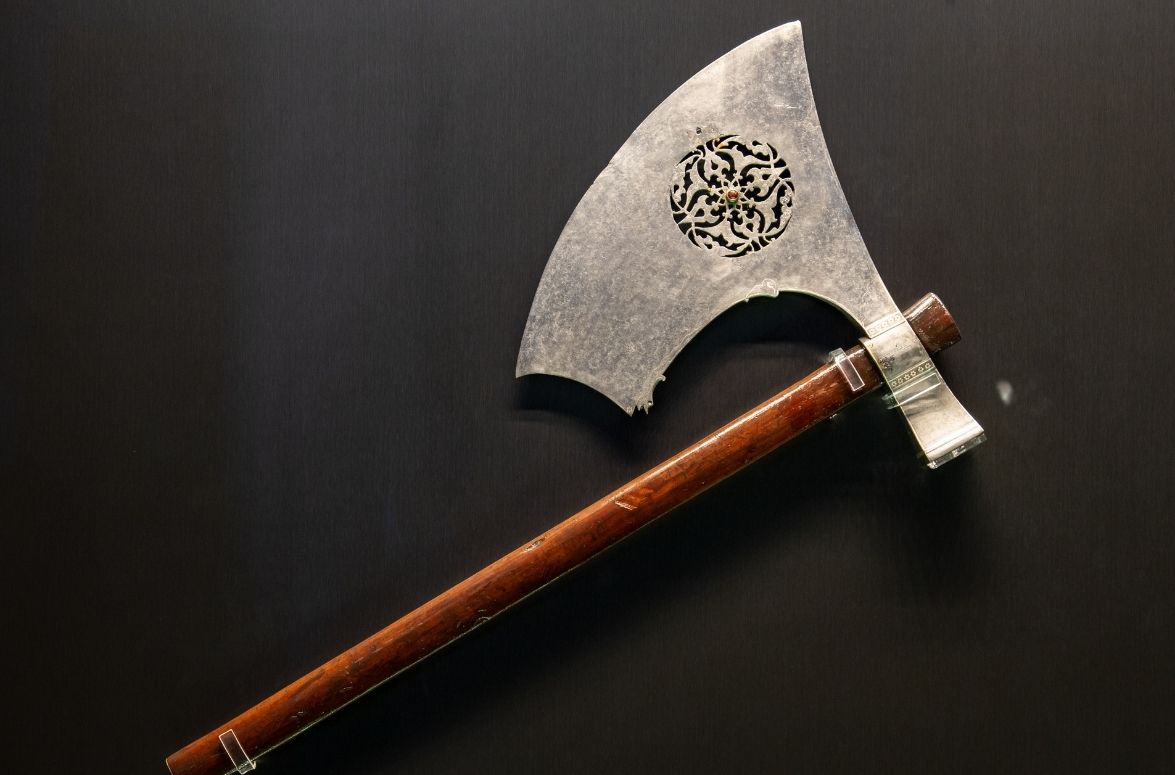The Vikings were some of the most intrepid voyagers of the early medieval world.
They were the first Europeans to reach the Americas and traveled as far east as Constantinople.
But, in all their travels, did they ever attain the most glittering prize of their era: Rome?
The Vikings never reached Rome. They had great success raiding major European cities in the 9th century A.D., sacking London and Paris multiple times.
Spurred on by these victories, later Viking chieftains reportedly set out for Rome but attacked the wrong city by mistake.
The remainder of this article will explain the circumstances surrounding this strange bit of Viking lore and describe relations between Vikings and Romans in their day. [1] [2] [3]
Also, see 11 Facts About Viking Longhouses to learn more.

When did the Vikings reach Rome?
The Vikings did not ever reach Rome. Having accessed the Mediterranean Sea, they may have reached Southern France or Italy.
Some accounts also describe a Viking raid on the Italian city of Luni, which they mistook for Rome, but these are not considered reliable.
Using advanced shipbuilding and navigation skills, the Vikings voyaged further than any other civilization of their day.
They traveled as far westward as Newfoundland in present-day Canada, landed on the Moroccan coast, and got as far east as Baghdad. [4]
Their low-hulled longboats also allowed the Vikings to travel swiftly up rivers and attack coastal cities all over Europe.
Between the 8th and 11th centuries A.D., they launched a series of raids on coastal cities all over Europe, looting and plundering everywhere they went.
Notably, the Vikings were also farmers, traders, and craftsmen in their native Scandinavia, but their relentless pillaging of Europe gave them a reputation as pirates.
Appropriately enough, the event that marks their arrival in history is their 793 A.D. raid on the monastery of Lindisfarne on the English coast.
The historical view of Vikings as pirates was reinforced by the accounts of their victims, from whose perspective the history of the Vikings is written.
As a result, numerous reports exist of Vikings’ raids conducted over many decades.
The Anglo-Saxon Chronicle mentions multiple Viking attacks on London, beginning in 830 A.D.
Its account speaks of great bloodshed in the city and effectively portrays the horror that the Vikings’ victims felt.
Undoubtedly, from the Viking perspective, such attacks were highly rewarding.
Similarly, the Vikings attacked Paris so many times in the 860s that, in 864 A.D., the Franks built bridges across the Seine to deter future Viking raids.
Despite this, the Vikings continued to attack Paris and successfully held the city to ransom in 886 A.D.
The Vikings had also settled large parts of Northern France, Ireland, and North-Eastern England by the late 9th century.
Spurred on by these triumphs, Viking chieftains trained their sights on Rome.
Two Viking chieftains, Bjorn Ironside and Hastein, are reported to have traveled down the Mediterranean Sea, attacking cities along the Iberian peninsula and the North African coast.
They had limited success broaching Umayyad Spain and continued on their way to the southern coasts of France and Italy.
According to Dudo of Saint-Quentin, who described these events over two centuries after they are supposed to have happened, Ironside and Hastein attacked the Italian city of Luni, mistaking it for Rome.
Dudo’s account vividly describes how the Vikings used an elaborate ruse to gain entry into the city.
Nevertheless, he maintains that, although the Vikings may have assumed they raided Rome, they did not actually do so.
Other accounts that refer to the loot of Luni include Deeds of the Danes by the Danish historian Saxo Grammaticus and two Icelandic sagas, The Tale of Ragnar’s Sons and The Saga of Ragnar Lothbrok.
All these sources date from the 12th and 13th centuries and may have been based on Dudo’s account, which is not considered reliable.
Finally, no other historical sources of the time mention the Vikings ever reaching Rome. It is unlikely they ever did.
Also, see How Did the Vikings Stay Warm? to learn more.

What did the Vikings do in Rome?
The Vikings did not do anything in Rome; they did not even get to it.
Although they may have traveled down the Mediterranean Sea and reached Italy, no reliable records indicate that they ever approached or attacked Rome.
A few historical and legendary sources describe a Viking raiding party setting off for Rome.
According to these accounts, the Viking chieftains Bjorn Ironside and Hastein attacked the Italian city of Luni in 860 A.D., mistaking it for Rome.
However, these accounts are considered unreliable, and it is uncertain whether the Vikings attacked Luni or mistook it for Rome.
No other reliable sources indicate that the Vikings ever sacked Rome or even arrived at it, making the events highly unlikely.
Also, see 250 Viking Boy Names to learn more.

Were the Vikings and the Romans enemies?
The Vikings and Romans were not enemies. The Western Roman Empire had collapsed by the time of the Vikings, and the Vikings had excellent relations with the Eastern Roman Empire.
They protected their rulers and fought on their side in battle, making them allies rather than enemies. [5] [6]
The start of the Viking Age is usually marked by the year 793 A.D., when the Vikings raided a monastery at Lindisfarne on the northeastern coast of England.
By then, the western branch of the Roman Empire no longer existed. Weakening rapidly over the 5th century A.D., its last Emperor was defeated in 476 A.D.
Thus, the Vikings could not have had any relations with the Western Roman Empire.
There are also no indications in the historical record that they had either friendly or hostile relations with the later Germanic rulers of Rome.
The Eastern Roman Empire—also known as the Byzantine Empire—continued for another millennium after the fall of the Western Roman Empire, long outlasting the Vikings.
This made the Vikings their contemporaries. However, the Vikings had excellent relations with the Byzantine kings.
Viking mercenaries augmented Byzantine forces in battle on multiple occasions.
They also made up the personal bodyguard of the Byzantine Emperors, which was known as the Varangian Guard.
All of this made the Vikings allies of the Eastern Roman Empire rather than enemies.
Conclusion
Although there are apocryphal accounts of Viking attempts to reach Rome, there is no reliable evidence that they actually did.
Also, see 250 Viking Girl Names to learn more.
References:
[1] Source
[2] Source
[3] Source
[4] Source
[5] Source
[6] Source
